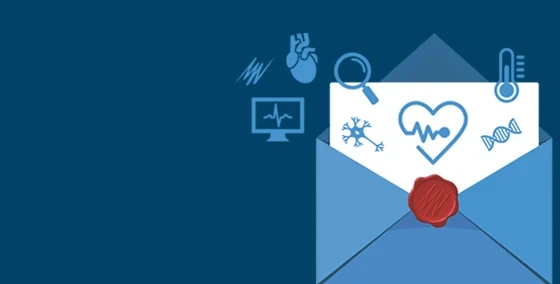
In this interview, we speak with a French teaching academic from the University of Champollion and a long-time ADInstruments user - Dr Arnaud Billet.
Dr Billet teaches French undergraduate students across a variety of subjects. Our online learning platform, Lt, is an integral part of his teaching and helps his students to expand and consolidate their knowledge.
Here, he shares his observations on the changing nature of life science classrooms and how education technology can help lecturers improve student experiences.
Read this blog in French here »
Starting on your journey as a university educator
Dr. Billet became an educator during the pandemic. He says, "I have been a research professor (assistant professor) since September 2020. I mainly teach animal physiology and cell biology but also microbiology, analytical biochemistry, and immunology."
"Currently, I teach undergraduate courses. Previously, I taught animal physiology and cell biology labs during my PhD and my second post-doc with student levels ranging from Bachelor's to Master's."

The changing classroom landscape
Having been a professor for some years, Arnaud has noticed some changes in students. He explains, "I find that students arrive at university with very different levels of knowledge."
Student attitudes appear to be changing too. "I also have the impression that some students arrive at university with a resigned attitude."
There are many factors that may contribute toward changing student attitudes, including economic concerns (like tuition fees, student debt, and the rising cost of living) as well as lingering expectations from the pandemic (expecting extended deadlines or more understanding from educators, for example).
Mental health issues are also prevalent, potentially exacerbated by the stress and isolation of the pandemic. For example, in England, over half of university students in one representative survey said that they had a current mental health issue.
Related: Talking Teaching: Pedagogy of care and the role of faculty in student mental well-being »
The best techniques to encourage student engagement
- Keep students involved in class: Arnaud says that "directly involving students in class activities is essential." This can be done via hands-on activities in the laboratory, for instance performing physiological experiments with Lt Sensors or conducting in-class polls.
- Make sure that content is cohesive and links together: "A strong link between the content seen in lectures, tutorials, and practical work is also crucial for student motivation."
- Include variety in your teaching and focus on integrated concepts: "Covering a wide range of topics is one way to engage students and keep them attentive and interested."
Related: Five tips for teachers: how to activate your lessons! »
Using Lt to support science teaching
Arnaud uses Moodle, Wooclap, and Lt to present different forms of content to students. This approach also lets him support students at different levels of achievement: "I also use these to provide additional course content to students who are motivated to go further in their learning."
By bringing together online content with physical hardware, Arnaud helps students understand theoretical concepts and observe them in the classroom. He says. "Lt Sensors are a very good solution for applying concepts seen in class. They are easy to set up, do not require additional equipment, and allow quick implementation of theoretical content. They can also be used for flipped classroom approaches."
"The Lt Sensors are simple to use, which allows students to concentrate on applying concepts without being confused by complex experimental protocols."
Ready-made content is also an advantage: "Lt also offers many easily-editable courses, thus facilitating the implementation of activities. Preparing for the lab by working through a Pre-Lab in Lt allows students to become familiar with how to collect data. They learn how to find their way around the platform immediately, once again allowing them to focus on the key learning objectives."
Educational challenges on the horizon - can technology help?
Looking ahead, Arnaud can see that educators will continue to face challenges, particularly with heterogeneous student cohorts. He predicts, "Modern education is going to have to deal with students entering study with very different levels of knowledge."
"Education technology could help to bridge some of the knowledge gaps between students, provided that they are trained in and have developed an appetite for new technologies."

Arnaud Billet is a physiology teacher at the University of Champollion (Institut National Universitaire Champollion) in Albi, France. He studied at the University of Poitiers where he used PowerLab and LabChart as part of his undergraduate and postgraduate studies. Upon obtaining an associate professorship at the Institut National Universitaire Champollion, he adopted Lt as a way to introduce new technologies to his teaching labs.

